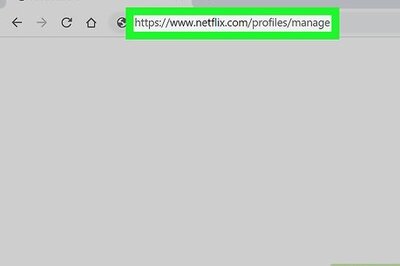
views
India's GDP will contract by 3 per cent in FY21 because of the coronavirus pandemic, assuming the economy is opened up fully from next month, a foreign brokerage said on Thursday.
BofA Securities also said the RBI will monetise the fiscal deficit through purchase of government bonds of up to $95 billion through open market operations, and its revaluation reserves of $127 billion may also be used to recapitalise state-run banks.
Economists have been sharply cutting their growth forecasts for FY21 because of the impact of the pandemic and all watchers, including the RBI, now believe the Indian GDP will contract this fiscal, with some estimates ranging up to 7 per cent negative growth.
BofA Securities' base case estimate is for 3 per cent contraction with the assumption of the economy opening up fully from mid-August, which may go up to 5 per cent if the crisis prolongs.
Its India economist Indranil Sen Gupta told reporters that his estimate is among the more optimistic ones and differs from others on the likelihood of the COVID-19 impact, which he said is a health emergency which no one can predict with certainty at present.
He said the strict lockdown in April and May had a 3 percentage points impact on the annual GDP, and subsequently with the limited opening up, the monthly impact has gone down to 1 percentage point per month.
India's GDP growth decelerated to 4.2 per cent in 2019-20, the weakest in over a decade. Gupta said the growth potential is over 7 per cent.
GDP growth will come in at 9 per cent in FY22 on the lower base, he said, adding that for two fiscal years (FY21 and 22), the growth will come at an average of 3 per cent, which would mean that the COVID-19 pandemic has set Indian economy back by a year.
The biggest strength for India at present is the over $500 billion in forex reserves which have been accumulated by the RBI over some months, and it is due to this kitty that the country is not being bracketed with other emerging economies by the markets at present, he said.
The rural sector also is a relatively bright spot because of better monsoons which will deliver a normal harvest for the summer crop and also the lesser instances of COVID-19 infections, he said, estimating the agriculture, forestry and fishing sector to clock 3.5 per cent growth.
However, on the flip side, India has a large population, limited healthcare infrastructure and has opened up the economy when the infection curve was rising, leading to tripling of cases in a month, he said, calling this as the biggest weakness at present.
The RBI will cut rates by 0.50 per cent by October in the base case, and if the economy contracts by a higher level of 5 per cent, the cuts will total up to 1.50 per cent more by December, he said.
However, the rise in the real rate of interest because of stiffness in the wholesale price inflation is a matter of concern, he said, adding that this needs attention.
Indian banks need over $7 billion in recapitalisation support, which will make sure that they continue to lend, he said, adding that bankers should desist from shying away from lending due to concerns of NPAs in future.
Given the difficulties in arranging the finance, the government can look at RBI's revaluation reserves to be deployed into bank recapitalisation.
Asked if such a contentious step will be considered, he said this is the best option given the circumstances as it does not put any pressure on the fiscal situation.


















Comments
0 comment